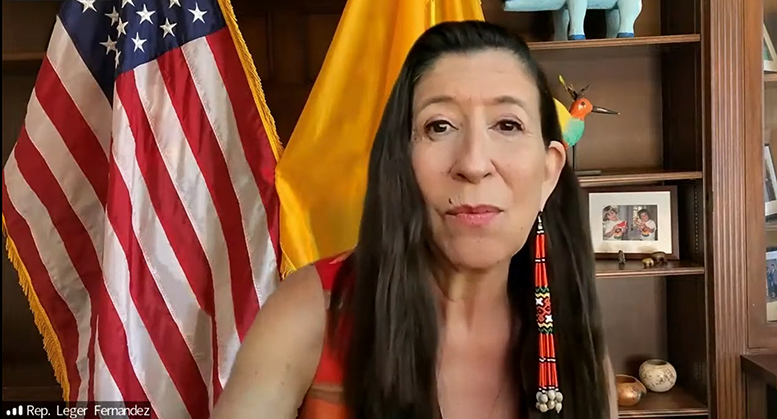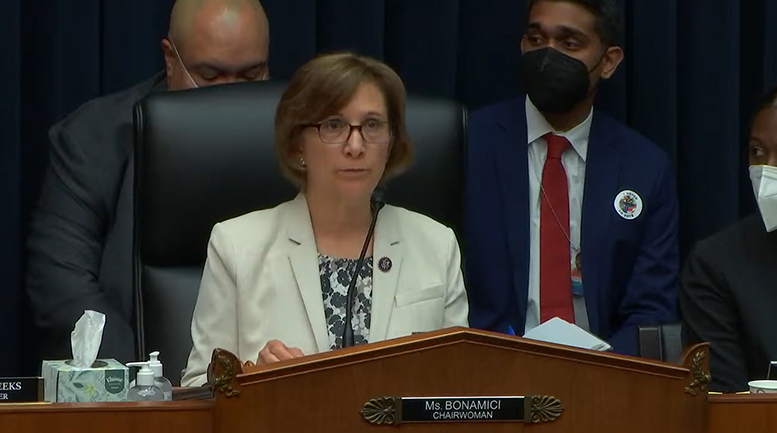Although federal Covid pandemic relief funding helped many tribal colleges and universities (TCUs) and their students, those institutions remain grossly underfunded, according to TCU advocates testifying before a House higher education subcommittee on Tuesday.
Through three Covid relief bills, including the American Rescue Plan, Congress provided $367 million to TCUs that were used to help students facing homelessness, hunger and other hardships, and provided institutions with resources to improve health and safety measures on campuses as well as better technology for learning, noted Rep. Suzanne Bonamici (D-Oregon), chair of the Higher Education and Workforce Investment Subcommittee.
But those funds are temporary, and many TCUs continue to struggle with sustained funding, much of which comes from the federal government, according to advocates at the hearing. Most TCUs receive about $8,060 per Indian student for an academic year, which is below the authorized level of more than $9,000 per Indian student, said Carrie Billy, president and CEO of the American Indian Higher Education Consortium.
And because they are not part of state education systems, most TCUs do not receive state funding, though a few do get some state support only for non-Native students at their college, Billy said. Sandra Boham, president at Salish Kootenai College in Montana, noted that 30% of students at her college are non-Indian.
Finding ways to make it work
Yet despite the lack of consistent funding and ongoing challenges with hunger, homelessness and other issues among Native American and Alaskan Native students, TCUs continue to be an integral part of their communities. Billy and presidents of two TCUs highlighted how the institutions help communities to preserve their heritage through language, tribal governance and other culturally centered programs, and how they also are developing programs and training students for emerging careers in the community.
For example, some TCUs have expanded their nursing programs, are working with local entities to focus on agribusiness and manufacturing, and looking for ways to expand apprenticeship and entrepreneurship opportunities, the speakers said. Before Oglala Lakota College (OLC) in South Dakota launched its nursing program, none of the nurses hired to work on the Oglala reservation were American Indian, Billy said. Today, more than half of the nurses there are American Indian and 85% of them are OLC graduates.
Another example Billy mentioned was a partnership among three TCUs that worked to develop a curriculum to help Native students meet the qualifications for agribusiness and financial management careers in USDA and the agriculture industry.
Focused on student loans
Republicans on the subcommittee mostly avoided asking about TCUs and instead attacked the president’s expected proposals for federal student loan forgiveness and on college costs, in general. Beth Akers, a senior fellow at American Enterprise Institute, mainly highlighted in her testimony the shortcomings of TCUs and argued against various student loan forgiveness proposals.
Billy took exception to some of Akers’ statements on low graduation rates among TCUs, noting that Akers was using data that were not comprehensive and didn’t include part-time students, certificate programs or transfer students. Billy also stressed that TCUs are open-access institutions and many of their students are placed in developmental education when they arrive — about 60% of TCU students test into developmental math, and more than 45% require developmental reading, she said. Coupled with non-academic issues faced by many Native American families, it presents an extraordinary challenge for TCUs to help students complete a credential, she said.

Still, TCUs are working to address these issues. Most TCUs now offer dual credit or early college programs for local high school students, and some are developing high school programs right at the TCUs, such as Salish Kootenai College’s STEM academy, Billy noted.
Several Democrats criticized Republicans for not focusing on TCUs and solutions to their challenges. In fact, student loans are not a major concern at the colleges, as more than 80% of TCU students receive Pell grants, and only one of 35 accredited TCUs offers student loans, TCU leaders noted.

